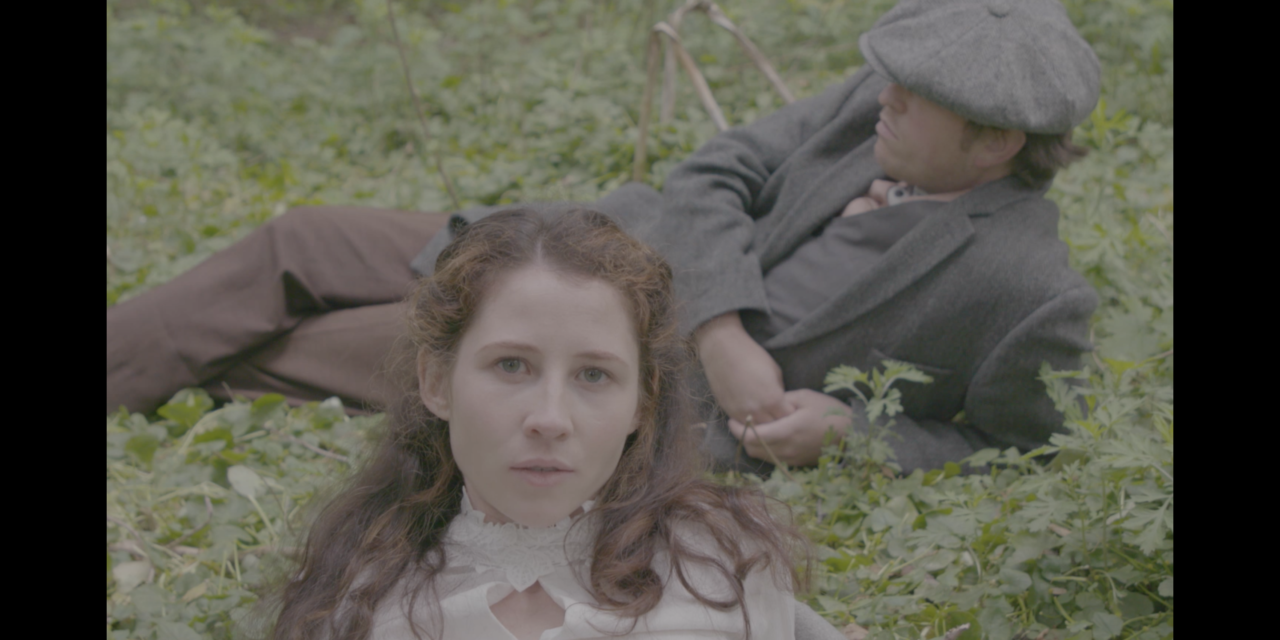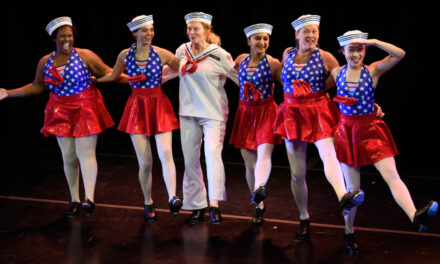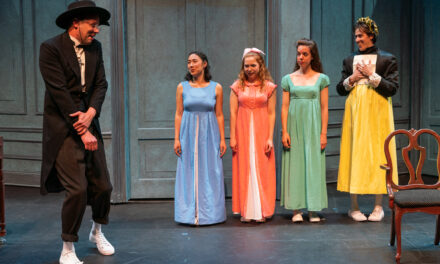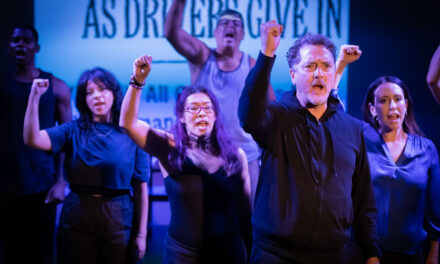The last several years in our shared history, particularly the rise of discriminatory legislation, pandemic-fueled xenophobia, and racially-motivated violence, have turned a sharper lens toward the struggles of the various ethnic groups that make up America’s population. Moreover, closer scrutiny of our nation’s past has revealed the cyclical nature of such issues, and underscored America’s status as both beacon and barrier for the immigrants who seek it. Recorded and streamed as part of Rattlestick Playwrights Theater’s Global Forms Theater Festival, James Clements & Doireann Mac Mahon’s Ellis Island speaks to these contradictions, blending the fictionalized accounts of two 1920s-era immigrants with music, folklore, and interviews with modern day expatriates to capture the enduring hopes, fears, concerns, and dreams of the immigrant experience.
Clements and Mac Mahon begin the piece in 1921, in the wake of the Spanish Flu pandemic, national anti-immigrant sentiment, and Ellis Island’s heyday as a port of entry. Amidst this charged environment, principal characters Hamish (Clements) and Claire (Mac Mahon) have fled their respective Scottish and Irish homelands in search of new lives in America, and now languish in Ellis Island’s quarantine hospital while awaiting their acceptance into or rejection from the country. Sharing folktales and personal accounts to pass the time, Hamish and Claire forge an uncanny friendship as they bond over joint frustrations and ponder the benefits and risks of the world before them. While Hamish juggles the allure of a new and prosperous homeland with a need to stay connected to his roots, Claire’s cynicism over their prospects belies a yearning to discard her past and reinvent herself as an American. Thanks to Clements’ and Mac Mahon’s chemistry and nuanced script work, the two form likable allies and interesting foils, their opposing views highlighting immigrants’ countless existential and practical concerns. The characters’ outer circumstances add to this turmoil: accounts of the island’s dehumanizing and arbitrary screening practices and litanies of advice for public acceptance (be vigilant but don’t look nervous; rehearse your answers but act natural) highlight the zero-sum game immigrants must play to enter into, and survive within, American society. As Hamish and Claire’s fates coalesce, both must consider whether “becoming American” is even possible, let alone worth its cost.
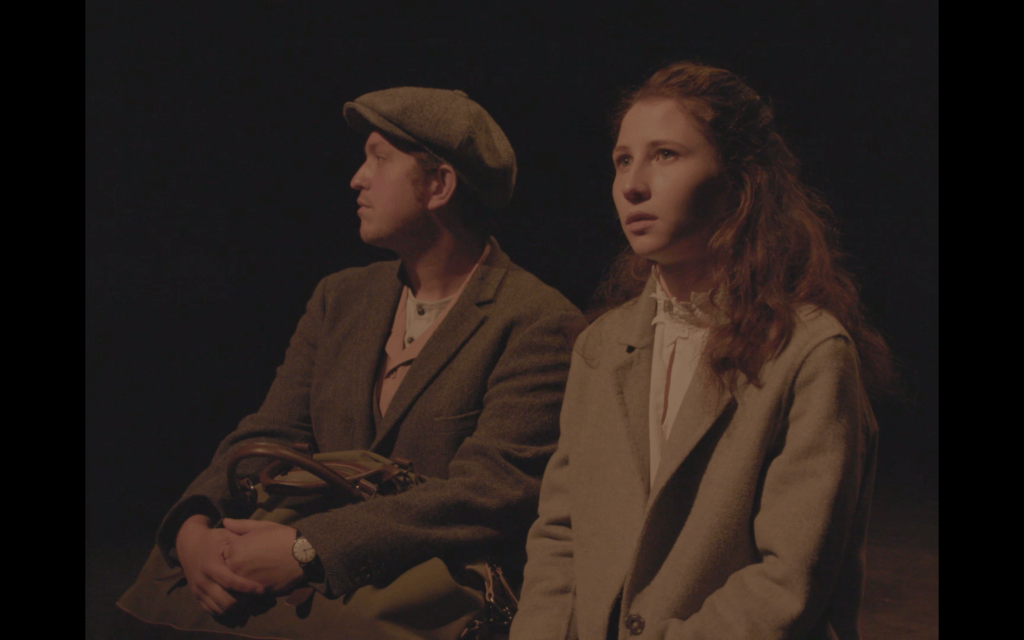
James Clements and Doireann Mac Mahon in Ellis Island. Photo Credit: Peter Azan.
Bridging historical and modern experience, Ellis Island jumps between the fictionalized segments and video or audio interviews with contemporary immigrant artists (Gilda Mercado, Emile Lacheny, Dorothea Gloria, Maamoun Tobbo, Vongai Shava, Sneha Sakhare, Charon Scerra, and Salma S. Zohdi). Though these accounts span a variety of backgrounds and experiences, the interviews reveal striking commonalities in each speaker’s questions of identity, ambivalence, and the ability to find and define “home.” Born in Zimbabwe but raised in London and Beijing, a young woman identifies as a global citizen but struggles to define herself by others’ parameters. Sending faraway relatives boxes of American goods to ease her homesickness, a Filipinx woman questions the colonialist implications of this gesture and her own love for and frustration with the worlds she inhabits. Mexican and Indian expatriates discuss the finer points of loyalty and assimilation as they navigate the dance between found communities, families of origin, and the thrills and fears of life within the American fold. Various stories capture the paradox of acceptance and rejection: several interviewees describe the freedom of expression and sense of chosen family to which life in America gives rise, while just as many give examples of the suspicion, discrimination, or violence even the most seemingly-welcomed groups must face. While none can conclusively bridge the gap between America’s ideals and its reality, each interviewee voices the power of those ideals in their choices to come to, and remain in, a country that equally affirms and denies them.
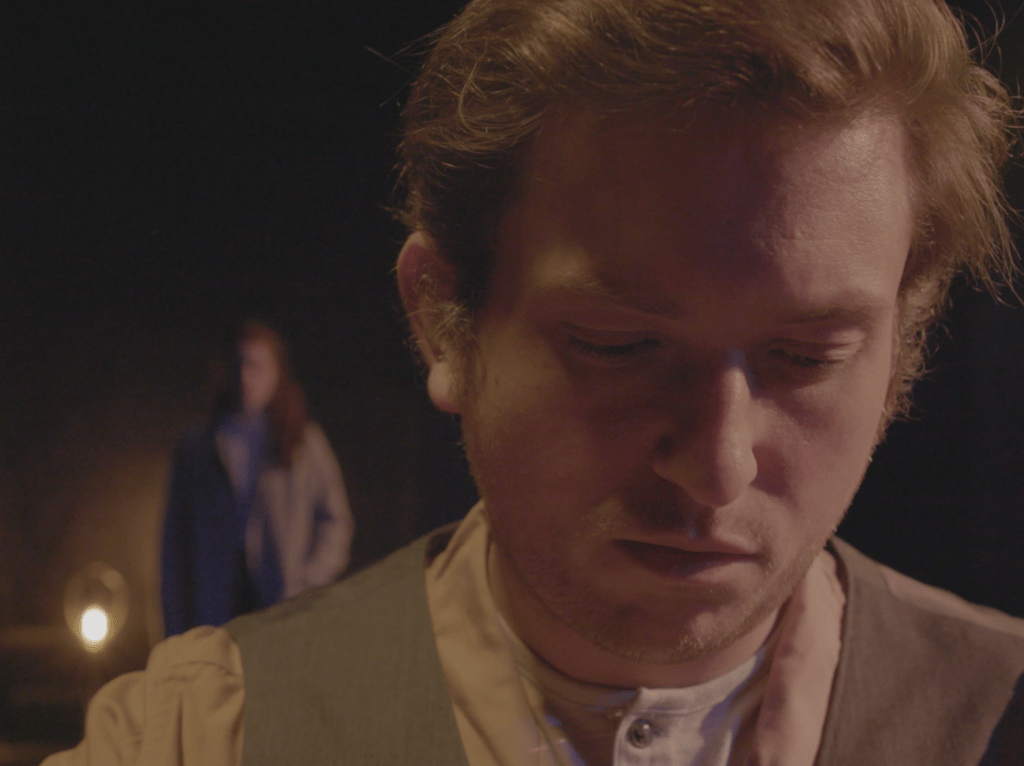
James Clements in Ellis Island. Photo Credit: Peter Azan.
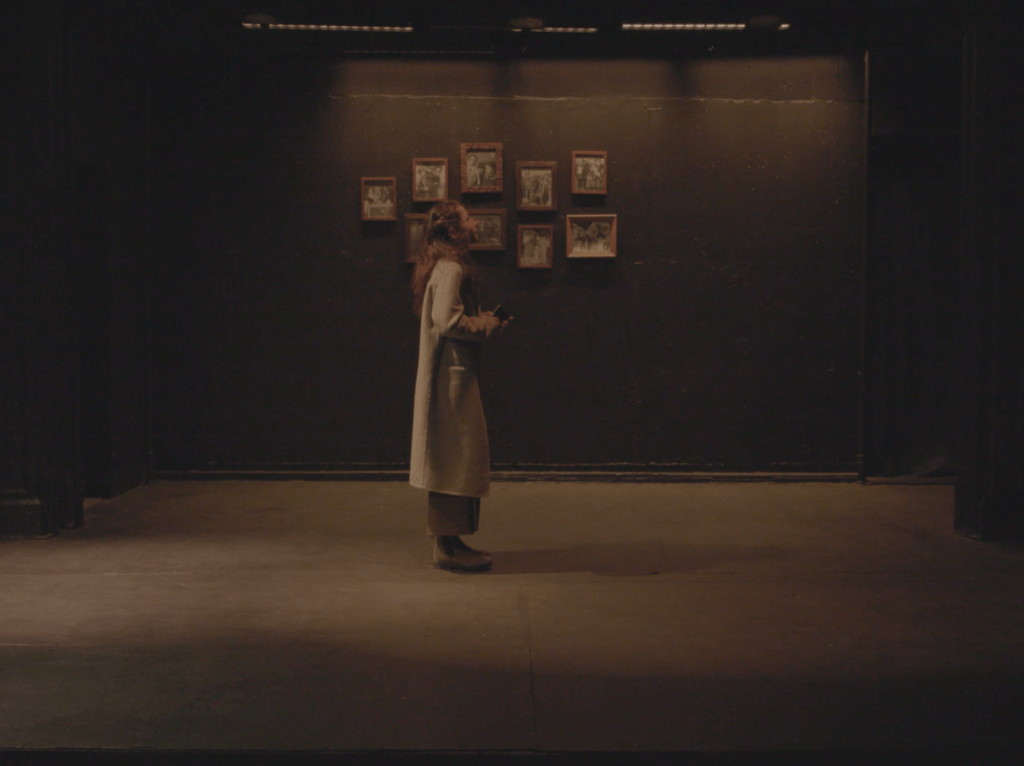
Doireann Mac Mahon in Ellis Island. Photo Credit: Peter Azan.
Ellis Island’s creators punctuate its interviews and staged scenes with video clips of Irish and Scottish folk songs, filmed in various NYC parks and performed in costume by Clements and Mac Mahon. These segments, especially songs focused on love, loss, and longing, sustain the piece’s ambiance and function as palate cleansers between the show’s narrative portions. That said, their stationary camera shots and lip-synced performances can read like low-tech music videos; while it’s difficult to retain the immediacy of musical performance via film, a video montage or some live instrumental or vocal sequences might have added the necessary variety.
Even as the years pass and global politics shift, Ellis Island highlights the common threads within the immigrant experience, and cautions against the biases and systemic toxicity into which we as Americans can too easily fall. When contemplating the “American Dream,” we must, as one interviewee states, consider whether our love for this concept motivates us to embody it, or leads us to willfully bypass the violence and oppression at its roots. By Ellis Island’s conclusion, we, as its characters and speakers, may find ourselves questioning whether such ideals can exist–and, ideally, feel driven to craft a dream we can all access and share.
This post was written by the author in their personal capacity.The opinions expressed in this article are the author’s own and do not reflect the view of The Theatre Times, their staff or collaborators.
This post was written by Emily Cordes.
The views expressed here belong to the author and do not necessarily reflect our views and opinions.

